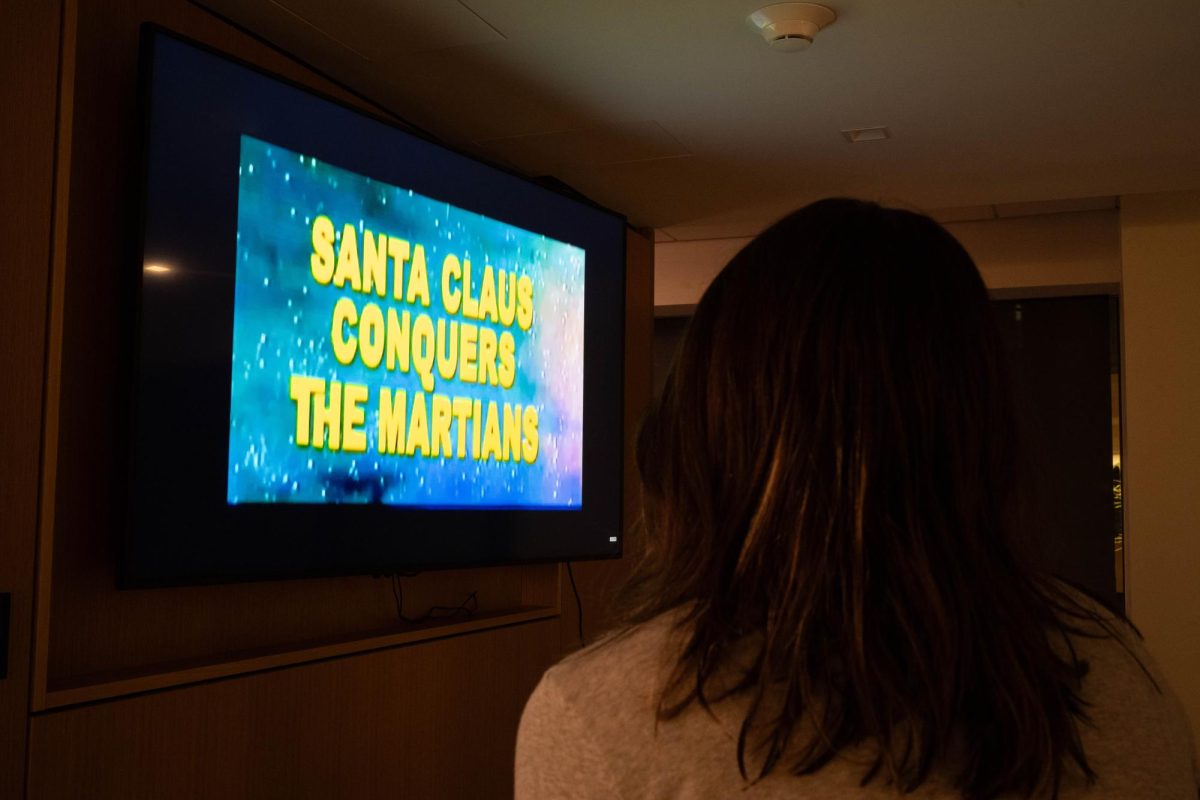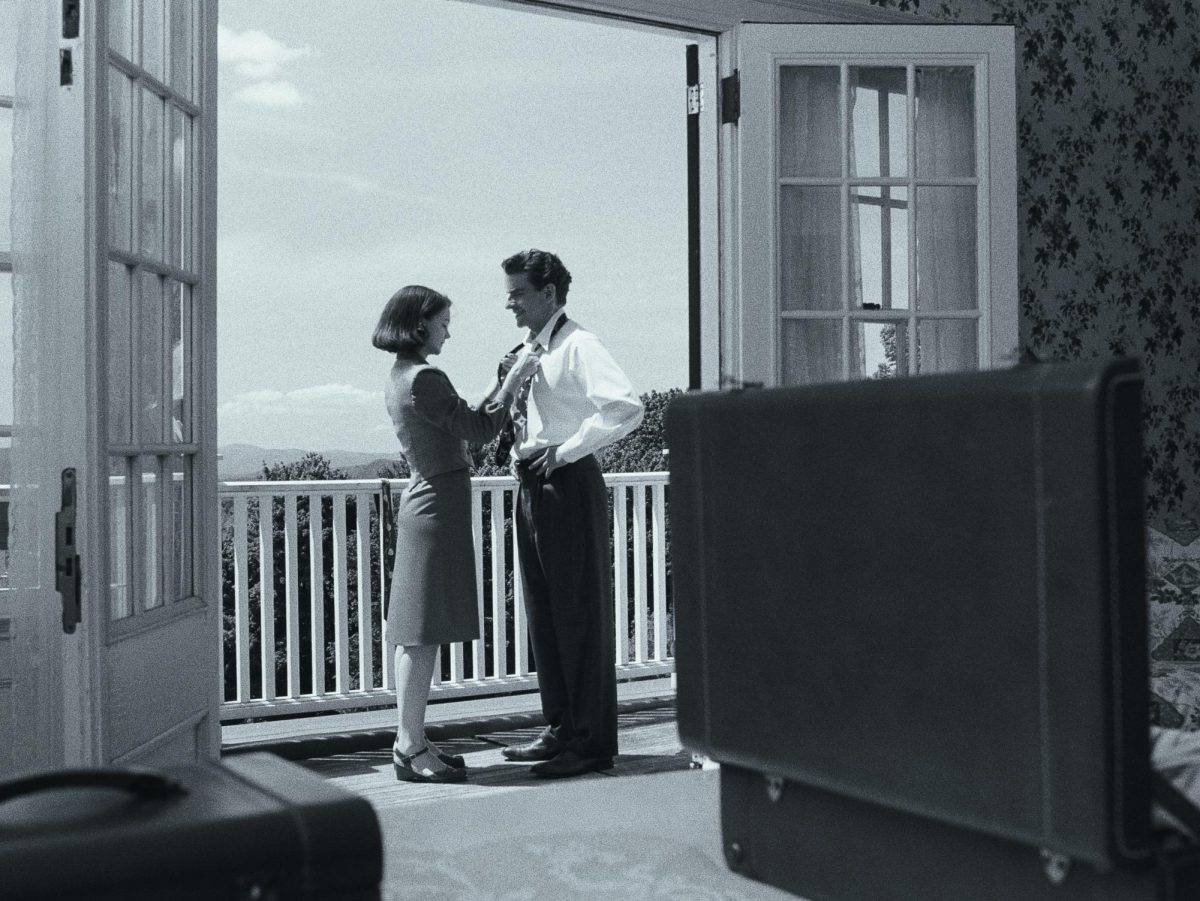More than 200,000 people sat for nearly five hours with nothing but the artificial light of the screen casting shadows over their awed faces this past weekend as the cultural phenomenon “Barbenheimer” swept the nation.
Part of what drove the “Barbenheimer” double-feature craze is the hyper feminine-masculine dichotomy between the films, as “Barbie” was advertised as a feminist paradise while viewers assumed “Oppenheimer,” a biopic about the man who led the creation of the atomic bomb, would tackle war and corruption. Ahead of the films’ opening, online consensus favored watching “Oppenheimer” first then ending the day with “Barbie” under the assumption that the former would be incredibly depressing and audiences would need an uplifting only the latter could provide. But in true GW fashion, this Barbie decided to be a devil’s advocate and watched director Greta Gerwig’s masterpiece first.
In “Barbie,” viewers are quickly introduced to Margot Robbie’s Stereotypical Barbie as she makes the rounds in Barbieland, a matriarchal utopia, from an all-Barbie Supreme Court and a Pink House for the president, while the Kens … are sort of in charge of the beach. After a long day of observing physicist Barbie win a Nobel Prize (score one for the Barbies over J. Robert Oppenheimer) and moderating a fight between Ryan Gosling’s needy Stereotypical Ken and Simu Liu’s Lifeguard Ken, she brings a choreographed, blowout dance party to a halt, asking: “Do you guys ever think about dying?”
The literal record-scratch moment sparks the plot of the film as the next day Barbie’s fantasy world crumbles, sending her to seek sage advice from Kate McKinnon’s Weird Barbie. She discovers the girl playing with her in the Real World is negatively influencing her life and journeys to heal her human counterpart.
In a desperate attempt for her affection, Gosling’s Ken tags along for the ride. Barbie and Ken get separated through their misadventures, giving Ken the opportunity to discover patriarchy and import it back to Barbieland, creating a host of problems that the Barbies must solve. Along the way, Barbie teams up with mother-daughter pair Gloria and Sasha, the humans responsible for her existential crisis.
After initially hearing about this film, many people wrote it off as fluff to promote Mattel’s brand. Instead, “Barbie” unexpectedly goes where many blockbusters before it haven’t, by catering to a predominantly female audience through its satirizing of the patriarchy and gender dynamics. From the hard cut showing an ad for Depression Barbie, a doll that wears sweatpants all day and rewatches the BBC’s “Pride and Prejudice” show until she passes out, to the Barbies experiencing the canon event of pretending to enjoy a man playing guitar, the comedy was meant for the girls.
The peppy acting of the ensemble cast, featuring stars from Issa Rae to Michael Cera, is true to the dolls they portray. Yet Robbie still delivers a heartfelt performance alongside her creator, Ruth Handler, in which Barbie unpacks an identity crisis while Ruth, played by Rhea Perlman, praises her for evolving. The film resolves with an ending that is beyond “Kenough” but you’ll have to see for yourself.
Christopher Nolan’s adaptation of the Pulitzer Prize-winning biography “American Prometheus: The Triumph and Tragedy of J. Robert Oppenheimer,” chronicles the father of the atomic bomb’s conflicted morals and personal woes as he worked on the Manhattan Project, and pinpoints his career’s downfall through two government hearings. An early scene in which Oppenheimer, played by Cillian Murphy, attempts to poison his teacher, goes through a crisis of conscience, and then thwarts the professor from dying foreshadows a shocking amount of the film.
Politics and quantum physics go hand in hand as Oppenheimer initially struggles to get security clearance due to his ties to members of the Communist Party. Few actors encapsulate pain and regret like Murphy as he stares off into space during a Red Scare-sparked hearing into his communist associations, which unfortunately eats up valuable time in the film as the hearings are endless.
The race to build the weapon of mass destruction leads Oppenheimer to assemble a team of renowned scientists and convene them for three years in Los Alamos, New Mexico. Though I failed my AP Physics exam, I found the scenes in which Oppenheimer debates with his fellow scientists how to construct the bomb to be among the most engaging in the movie — in part because of the bizarre ensemble of actors Nolan assembled. During the infamous Trinity test, none other than Josh Peck — yes, a man who once ran over Oprah in a Nickelodeon show — turns the key that unleashes a bomb.
But Florence Pugh and Emily Blunt, who were limited in screen time likely because of the unnecessarily extensive time Nolan devoted to the hearings, still shined. Pugh in the role of Jean Tatlock, Oppenheimer’s ex-flame, captures an intense torturedness in her vulnerable interactions with him, especially when he reveals to her his engagement. Blunt, who plays Oppenheimer’s wife Kitty, expertly shifts from quiet despair after being made aware of his affair to firecracker as she defends him during a security hearing.
All of that said, no movie should be three hours long. In an effort to stay true to history, Nolan drilled too deep into the legal and national security implications of Oppenheimer’s loss of clearance, misplacing the actual plot: Oppenheimer’s late-arriving conscience and subsequent moral crisis. In an effort to build tension, the complex governmental hearings just dragged on as Nolan brought back too many acquaintances and enemies of Oppenheimer to make their cases.
After participating in this fever dream of head-to-toe pink outfits and a frenzy of film bros, I can confidently say seeing these films back to back is a mistake. Some might argue that I just watched them in the wrong order but “Barbie” genuinely was not all party, more a meditation on girl and womanhood, and in truth, no movie or TV show can overpower “Oppenheimer.” Believe me, I tried watching “Glee” afterward.
These films each deserve a full day and a clear mind to be appreciated, from the fantastic floor-to-ceiling plastic sets of “Barbie” to the multi-layered, fraught emotions of “Oppenheimer.”








